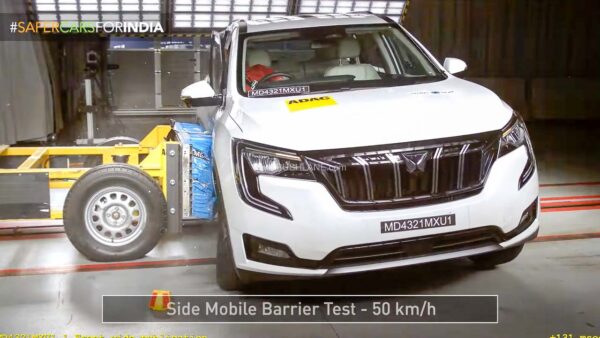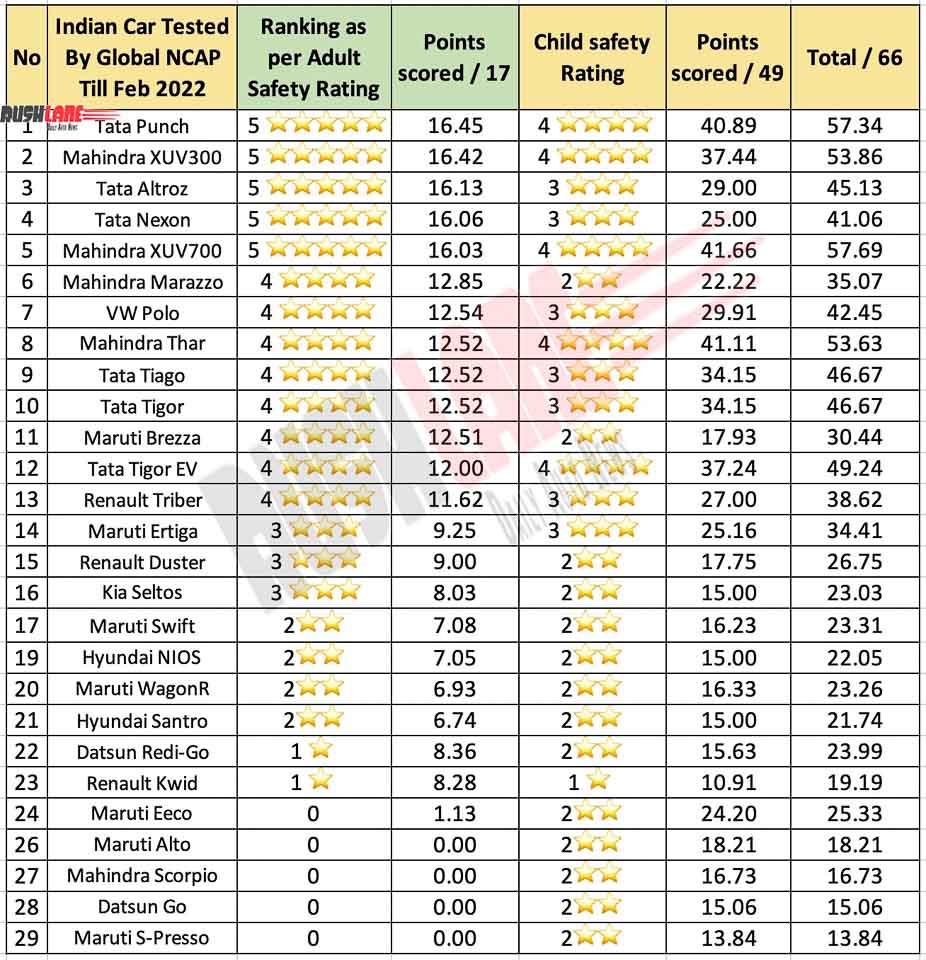Bharat NCAP Car Safety Rating System Protocols To Be Finalized Soon
[ad_1]

Bharat New Car Assessment Program (NCAP) will assess new vehicles and assign star ratings on the same lines as Global NCAP and European NCAP car safety programs
Talks of having an exclusive Indian NCAP for testing safety of new vehicles has been doing the rounds for some years now. As per latest announcements, this could be a reality soon. As on date it is seen that homegrown auto makers, Tata and Mahindra have some of the safest cars on offer, as per Global NCAP ratings.
Union Transport Minister Nitin Gadkari has announced a new star rating system for vehicles in India. This will be on the same lines as Global NCAP and European NCAP and will be called ‘Bharat NCAP’. Gadkari has stressed the need to reduce road accidents in the country which as on date account for over 1.50 lakh road accidents each year leading to a 3.1 percent loss in the country’s GDP.
The Government now targets to reduce the number of road accidents by 50 percent by the year 2025. The condition of Indian roads, which are at times reasons for these accidents, should also be improved on parallel lines if there is to be any real change to be brought about.
Bharat NCAP Car Safety Rating System
Though no time frame was given for launching these new vehicle safety standard, the Government has announced that it will be made mandatory for all new vehicles that carry upto 8 passengers to have at least 6 airbags. These will include front two airbags along with side curtain airbags for passengers in all three rows. Other safety features will include three-point seat belt and automatic emergency braking system (AEBS) for new passenger vehicles. These new safety standards are based on suggestions received by the public when they were asked for comments.

The new safety standards will not only protect passengers but will also take into account safety of both pedestrians and other road users. Gadkari has also devised a 12 point initiative for mandatory safety features such as Electronic Stability Control, Emergency Braking System and Driver Drowsiness Alert System to be a part of these new safety standards.
As on date, only front and rear window seats have three point seat belts which are also known as Y shaped belts. The middle seats at the rear have seatbelts similar to that seen on airplanes which go over the lap.
Implementation of New Safety Standards
The Government is also working on introducing other safety regulations as per global standards. These will include noise in electric vehicles so as to warn other road users of their presence. This comes at a time when the demand for electric vehicles is on the rise.
On the plus side, while this will conserve energy and preserve the environment, it is noted that these vehicles make less sound. It often leads to other road users not being aware of their presence thus making them vulnerable to crashes and accidents.
In keeping with these higher safety standards, the Government has also set up production linked incentive schemes leading to an increase in production of airbags and a dip in pricing. Earlier fitting of two airbags could cost the automaker around Rs 12,000. This has now declined to around Rs 3,000 for a pair of airbags thus making it feasible for both automaker and buyer to have this added safety feature. Even as October 2022 has been proposed for the deadline for implementation of these new safety standards, the industry seeks more time to comply with these regulations.
[ad_2]
Source link










